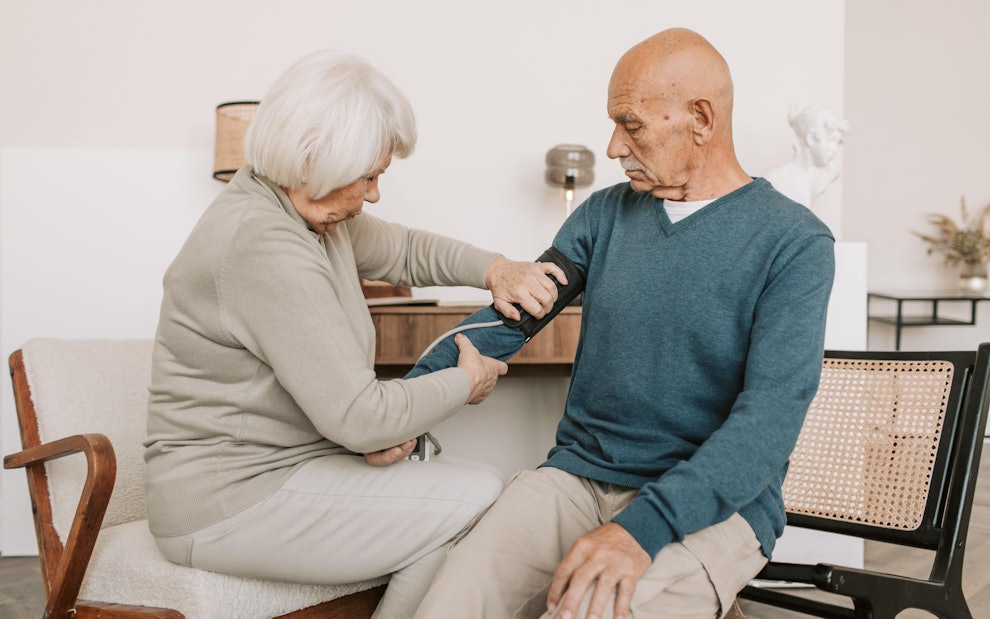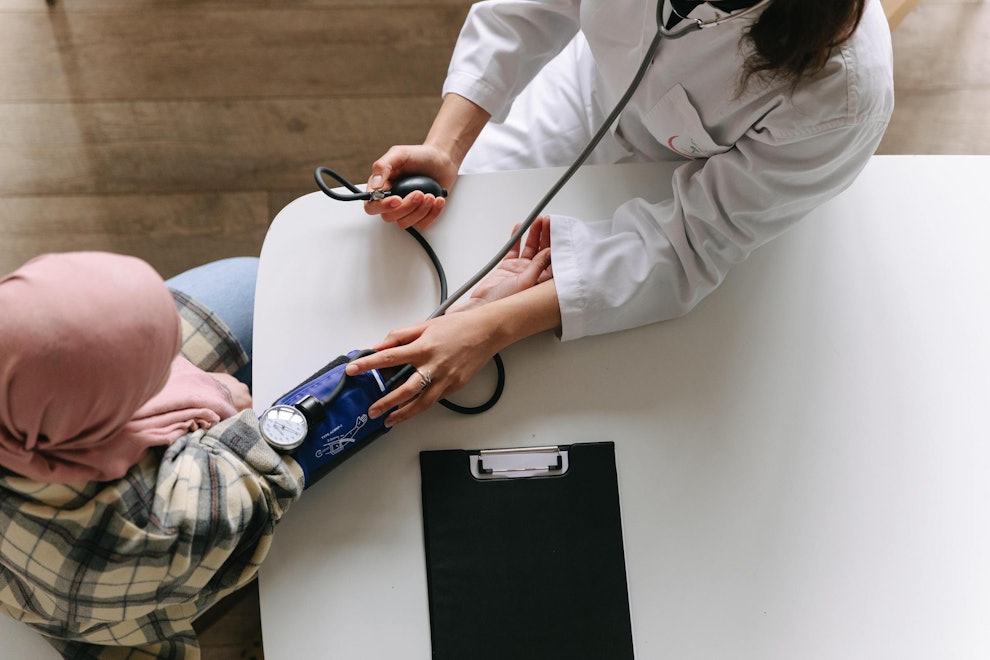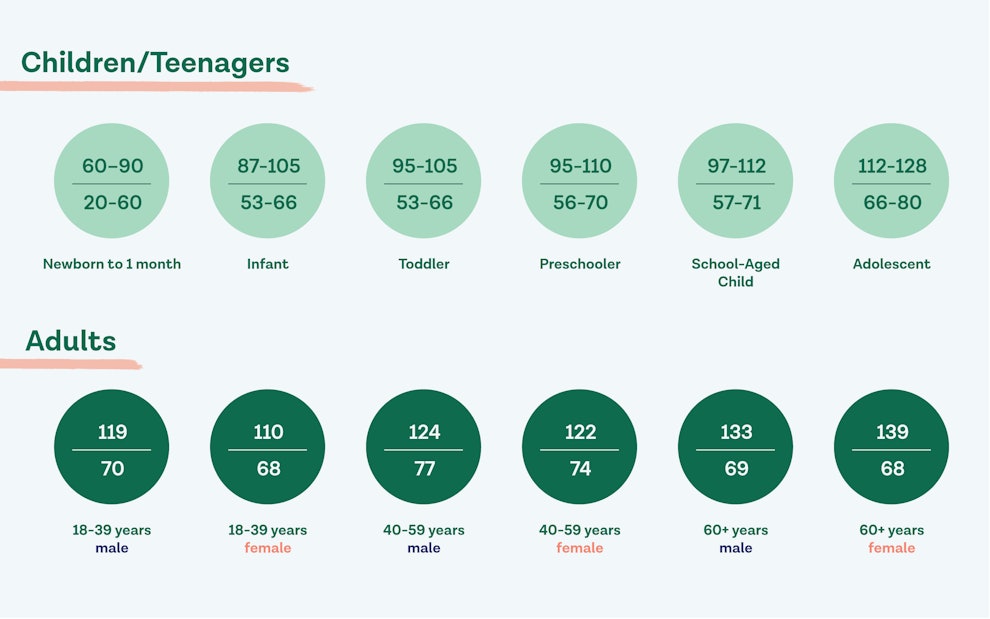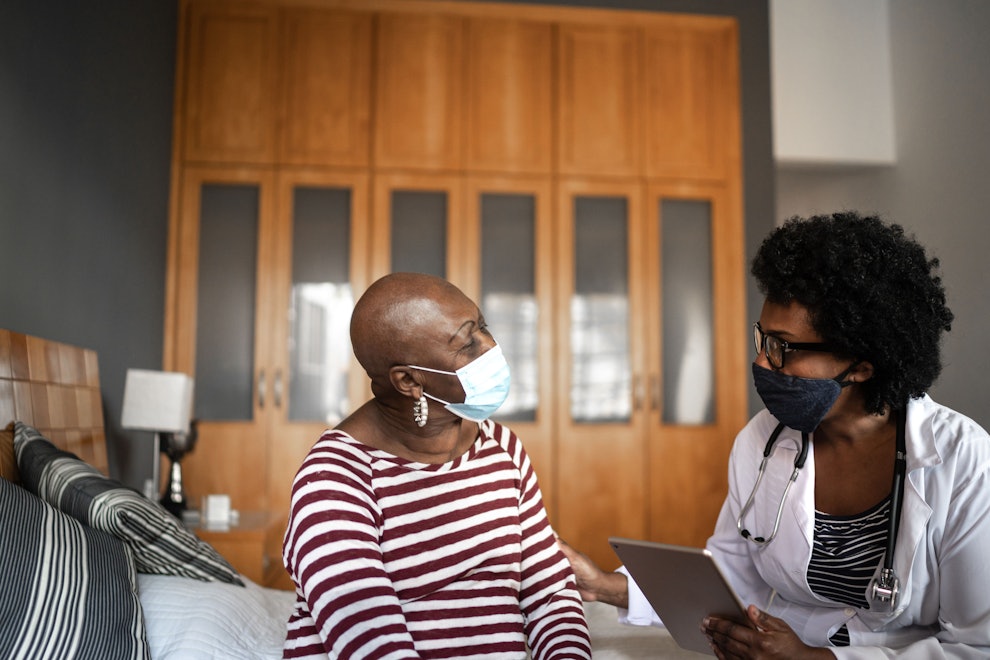Normal Blood Pressure By Age: What You Need To Know
Article at a glance
Blood pressure is the measurement of the force of blood against the walls of arteries as the heart pumps blood.
Higher blood pressure rates are common as a person ages—9 in 10 adults will often develop some level of high blood pressure in their lifetime.
A combination of lifestyle changes and medication can help keep blood pressure healthy.

Blood pressure measures the force of blood pushing against the walls of arteries as a heart pumps blood. As the heart pumps, it sends oxygen-rich blood through a person’s arteries—if blood pressure is too high or too low, this can cause potential health issues.

What Do The Different Blood Pressure Numbers Mean?
When checking blood pressure, there are two different numbers, presented like a fraction, that measure when the heart is pumping blood versus when the heart is at rest. These numbers are known as systolic and diastolic blood pressure, and the reading indicates what level of blood pressure a person is experiencing. An example of a blood pressure reading would be:120/80.
Systolic Blood Pressure
The top number (120 in our example) is called systolic blood pressure, which measures how much pressure the blood exerts against the arteries. When a heart contracts, it pushes extra blood throughout the circulatory system to reach different parts of the body, creating what is known as systolic pressure.
Diastolic Blood Pressure
The bottom number (80 in our example) is called diastolic blood pressure, which measures the pressure level when the heart is resting. The diastolic pressure number measures the lowest pressure between heartbeats or when the heart is resting before it pumps again.
Each number is measured in units of mm HG, or “millimeters of Mercury,” due to former blood pressure gauges using Mercury, though these have since been replaced with electronic monitors.
What Are The Different Types of Blood Pressure Readings?
There are a few different types of blood pressure categories used to describe a blood pressure reading such as low blood pressure, elevated blood pressure, and more.
Low Blood Pressure
This stage occurs when the systolic blood pressure reading is below 90 mm HG or the diastolic blood pressure is below 60 mm HG. A low blood pressure reading is not an immediate cause for alarm. However, depending on the number, low blood pressure could have no noticeable side effects or cause more serious issues such as dizziness, fainting, and it can occasionally be life-threatening.
Some causes of low blood pressure include:
- Pregnancy
- Prolonged bed rest
- Certain medications
- Nutritional deficiencies
- Allergic reaction
- Severe infection
- Heart problems
Having one low blood pressure reading is not cause for concern unless other symptoms such as nausea, dizziness, or lightheadedness are also present. If experiencing other symptoms, then consulting with a healthcare provider is a good next step to take.
Normal Blood Pressure
This indicates that the systolic and diastolic blood pressure numbers are at appropriate levels (on average, systolic pressure is under 120 mm HG, and diastolic pressure is below 80 mm HG).
High Blood Pressure
High blood pressure can vary between levels such as elevated blood pressure, hypertension stage I, hypertension stage II, and hypertensive crisis—each level carrying an increasing level of risk and severity.
Elevated Blood Pressure
This indicates the systolic blood pressure number is between 120–129 mm HG and the diastolic number is less than 80 mm HG. Elevated blood pressure is not automatically a sign of hypertension, but a reading like this should be taken seriously to avoid experiencing high blood pressure levels.
Potential causes of elevated blood pressure include:
- Heart problems that directly affect the blood vessels (i.e. congenital heart defect)
- Kidney disease
- Obstructive sleep apnea
- Some medications, such as birth control pills, cold and sinus medicines, and some prescription drugs
- Thyroid disease
Elevated blood pressure should be monitored on a regular basis (such as at doctor’s appointments), though a slight elevation in blood pressure isn’t an immediate cause for alarm. Continuing to monitor blood pressure levels and ensuring they don’t rise into high blood pressure is the best approach. If the levels reach high blood pressure levels, it is important to contact a healthcare provider.
High Blood Pressure (Hypertension Stage I)
This stage occurs when the systolic blood pressure reads between 130–139 mm HG and the diastolic blood pressure reads between 80–89 mm HG. At this stage, doctors or primary care providers may advise lifestyle changes—such as a healthier diet, more exercise, etc.—but may also introduce medication, particularly if a person already has cardiovascular disease or other heart issues.
High Blood Pressure (Hypertension Stage II)
This stage occurs when systolic pressure reads between 140–149 mm HG, and diastolic pressure reads at least 90 mm HG. Blood pressure medication and lifestyle changes will be implemented if they weren’t previously, and this stage should be carefully monitored by a patient and their provider.
Hypertensive Crisis
This stage occurs when systolic pressure exceeds 180 mm HG and diastolic pressure exceeds 120 mm HG. This stage can result in organ damage if immediate attention is not given. Emergency medical help should be sought, especially if a patient begins to experience symptoms of stroke such as:
- Dizziness
- Chest pain
- Shortness of breath occurs
If there are any large drops or increases in blood pressure (more than 20 mm HG), seek medical attention.
High blood pressure affects nearly half of all adults (47%) according to the CDC, and can be linked to a few different causes, such as:
- Diabetes
- Kidney disease
- Hormone problems (such as thyroid issues or Cushing’s syndrome)
- Lupus
- Medications (such as birth control, NSAIDs, some cold and flu medicines,
- Some types of antidepressants
- Steroids
One high blood pressure reading isn’t something to stress over. However, if there are at least two blood pressure readings higher than what your doctor recommends, you will want to schedule an appointment. Untreated high blood pressure (hypertension) can cause damage to your blood vessels, heart, kidneys, and brain, so it’s important to see a doctor and find ways to lower it.
If a blood pressure reading reaches over 180/120 and is also accompanied by symptoms such as chest pain, shortness of breath, change in vision, or severe headache, you will want to seek emergency medical attention immediately.

What Is Considered Normal Blood Pressure for Each Age Group?
When it comes to citing an appropriate range for normal blood pressure, the readings can vary slightly depending on age. Below, we’ve categorized average blood pressure ranges for each age group.
Children/Teenagers
- Newborn‑1 month: 60–90 mm HG systolic/20–60 mm HG diastolic
- Infant: 87–105 mm HG systolic 53–66 mm HG diastolic
- Toddler: 95–105 mm HG systolic 53–66 mm HG diastolic
- Preschooler: 95–110 mm HG systolic 56–70 mm HG diastolic
- School-aged child: 97–112 mm HG systolic 57–71 mm HG diastolic
- Adolescent: 112–128 mm HG systolic 66–80 mm HG diastolic
Adults
- 18–39 years: 119/70 mm HG for men 110/68 mm HG for women
- 40–59 years: 124/77 mm HG for men 122/74 mm HG for women
- 60+ years: 133/69 mm HG for men, 139/68 mm HG for women.
Note: View the American Heart Association’s blood pressure chart.
Blood Pressure Chart

Risk Factors For High Blood Pressure
High blood pressure is common—the Center for Disease Control and Prevention (CDC) states that 9 out of 10 Americans will develop high blood pressure at some point in their lifetime. However, there are a few factors that can indicate a higher chance, including:
Having Elevated Blood Pressure
If blood pressure readings are consistently elevated, then the chances of having high blood pressure increase (if the condition is not monitored).
Family History/Genetics
If there is a family history of high blood pressure, chances are higher that a person may develop it.
Diabetes
The CDC states that 6 out of 10 people who have diabetes will also develop high blood pressure.
Age
In general, most adults are at a higher risk of developing high blood pressure as they age.
Race
According to the CDC, African Americans are more likely to experience high blood pressure than other races as well as experience it earlier in life. To learn more about the risk of hypertension in African Americans, visit this source.

How Blood Pressure is Measured
To measure blood pressure, there are a few different ways a person can get a reading:
Testing centers in pharmacies, workplaces, and medical clinics
During an annual physical/scheduled visit
By purchasing a blood pressure monitor at a pharmacy or online for home use
To get a blood pressure reading, a blood pressure cuff connected to a monitor is placed around a person’s arm. The cuff is inflated using an air pump until the pressure prevents blood flow to the brachial artery, also known as the major artery found in the upper arm.
Then, the cuff deflates, and the device measures the pressure when blood starts flowing again. Once the cuff is fully deflated, the device measures the lowest pressure between heartbeats. These two readings make up the systolic and diastolic blood pressure readings.
Taking Blood Pressure Readings At Home
If taking blood pressure at home, there are a few things to keep in mind:
Try to rest/relax for a few minutes before taking the first reading, as the goal is to measure your blood pressure when it is most stable.
Avoid drinking, smoking, or exercising for at least 30 minutes before a reading, as per recommendation from the AMA.
Choose the proper-sized cuff for your arm, as it will allow for a more accurate reading.
Ensure you’re sitting in a proper position—upright, back straight, with support for your cuffed arm. Also, ensure the bottom of the cuff is placed right above the bend of your elbow and that sleeves should be rolled up, with no layers between the cuff and your skin.
Take multiple readings to account for things such as temperature and stress.
Choose a reliable blood pressure monitor—the AHA has recommendations on choosing the right one for you here.
Note: To learn the steps and proper techniques of taking blood pressure at home, visit this source.

How To Treat/Manage High Blood Pressure
Typically, depending on the blood pressure reading, a physician or provider may suggest lifestyle changes, blood pressure medicine, or a combination to help lower high blood pressure.
Lifestyle changes
In some cases, making lifestyle changes can help reduce blood pressure, helping to bring or keep it at a normal level. Some of these changes may include:
Altering Diet: suggestions may be to reduce sodium intake and eat a more well-balanced diet with plenty of fruit and vegetables if not already doing so.
Physical Activity: if not already, engaging in physical activity through exercise routines, walking, dancing, hiking, or even riding a bike can help reduce blood pressure.
Alcohol Consumption: reducing or eliminating alcohol can affect blood pressure (it is recommended that men exceed no more than two drinks daily, and women, one drink daily).
Smoking Habits: smoking can damage the heart and blood vessels, and nicotine found in cigarettes (as well as other tobacco products) can increase blood pressure.
Weight Loss: in some cases, a health care provider may recommend losing weight to help reduce the amount of pressure the heart is under to pump blood effectively.
Sleep Schedule: getting the appropriate amount of sleep can help keep the heart healthy. The CDC claims that not getting enough sleep is linked to an increased risk of heart disease, stroke, and high blood pressure.
Abstaining from or Changing Current Medications: in some cases, high blood pressure can be a direct result of a medication taken for another issue—i.e. Cold and flu medicines, NSAIDs, or birth control. In these cases, a healthcare provider may recommend removing or changing these medications to regulate blood pressure levels, if possible.
Medication
There are a few different types of medications that may be recommended.
If under the age of 55, a person may either be offered:
An angiotensin-converting enzyme (ACE) inhibitor: these relax the blood vessels to help lower blood pressure.
An angiotensin‑2 receptor blocker (ARB): these are similar to ACE inhibitors but are usually given if the ACE inhibitor is causing troublesome side effects.
If over the age of 55, a person may be offered:
Calcium channel blockers: these lower blood pressure by widening blood vessels.
Diuretics: also called “water pills,” these help to flush out excess water and salt through urination.
Beta-blockers: these cause the heart to beat slower and less forcefully. These are often only introduced if other treatments don’t work.
In many cases, both lifestyle and medication are often used to keep blood pressure at a healthy level. A primary care provider can monitor progress over time to alter the type or amount of medication used, and possibly with proper care and lifestyle changes, medication may be eliminated altogether.
FAQ
What is the average blood pressure for seniors?
The average blood pressure for seniors (adults over age 60) is 133/69 mm HG for men and 139/68 mm HG for women.
Sources
- https://www.health.harvard.edu/heart-health/reading-the-new-blood-pressure-guidelines
- https://www.nia.nih.gov/health/high-blood-pressure-and-older-adults#how
- https://www.heart.org/en/health-topics/high-blood-pressure/understanding-blood-pressure-readings
- https://www.heart.org/en/health-topics/high-blood-pressure/understanding-blood-pressure-readings/monitoring-your-blood-pressure-at-home
- https://uihc.org/childrens/educational-resources/pediatric-critical-care-reference-guide-picu-charts-picu-handbook
- https://www.cdc.gov/bloodpressure/risk_factors.htm
- https://www.nhs.uk/conditions/high-blood-pressure-hypertension/treatment/
- https://www.cdc.gov/bloodpressure/prevent.htm
- https://www.nhlbi.nih.gov/health-topics/low-blood-pressure
- https://www.heart.org/en/health-topics/high-blood-pressure/the-facts-about-high-blood-pressure/low-blood-pressure-when-blood-pressure-is-too-low
- https://www.mayoclinic.org/diseases-conditions/prehypertension/symptoms-causes/syc-20376703
- https://www.nhs.uk/conditions/high-blood-pressure-hypertension/causes/
- https://www.baptisthealth.com/blog/heart-care/healthy-blood-pressure-by-age-and-gender-chart
Understanding Your Blood Pressure
This graphic breaks down how to read your blood pressure and what different numbers could mean.




